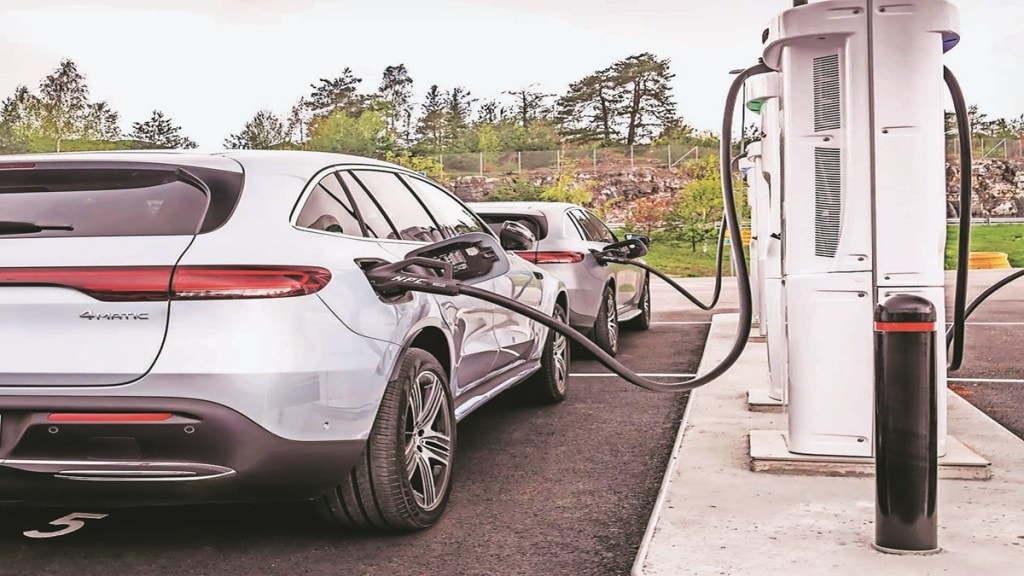By Sandeep Budki
India’s electric vehicle (EV) market is witnessing rapid growth, driven by government incentives, rising fuel costs and increasing consumer interest in sustainable transportation. However, the lack of adequate charging infrastructure remains a key obstacle to wider adoption. While urban centres are seeing gradual improvements, rural and semi-urban areas continue to struggle with insufficient public charging stations. Without accessible and reliable charging points, concerns like “range anxiety”— the fear of running out of battery before reaching a charging station — discourage potential buyers.
Addressing this challenge requires a coordinated effort from automakers, policymakers, and private stakeholders. Industry leaders emphasise the need for policy changes and stronger public-private partnerships to drive the expansion of EV charging infrastructure.
Santosh Iyer, MD & CEO, Mercedes-Benz India, said, “Charging infrastructure should be classified as part of the infrastructure industry, creating access to affordable financing options and incentivising public and private players to invest. A unified approach across the industry, where all service providers operate under one standardised system, can significantly simplify and scale up charging infrastructure.”
While the charging network is expanding, charge point operators face operational and financial challenges, points out Balaje Rajan, chief strategy officer, Tata Motors Passenger Vehicles, and Tata Passenger Electric Mobility . Among the necessary policy interventions, he recommended reducing GST on EV charging services from 18% to 5%, offering accelerated depreciation benefits for charging infrastructure, and providing soft loans to operators. He also highlighted the burden of electricity tariffs, where demand charges can range from Rs 50 to Rs 150 per kVA per month. “For a 30 kW charger, the fixed charge per month can be as high as Rs 4,500, even if the charger sees zero usage. Exempting such charges, especially during the initial years of operation, would make operations more viable,” he said.
Beyond policy measures, regulatory bottlenecks remain a significant hurdle. Raman Bhatia, founder & MD, Servotech Renewable Power System, stressed the need for a simplified approval process and stronger collaboration at the local level.
“Policy needs to be more than just subsidies. Single-window clearances for setting up charging stations are essential,” he said. He also called for dedicated land allocation along highways and a structured partnership model where the government enables infrastructure growth without excessive control.
Technology will also play a crucial role in expanding charging networks, particularly in rural areas where grid stability remains a challenge. Iyer emphasised the importance of a unified digital platform, similar to UPI for payments, to simplify the process of locating charging stations, booking slots, and making payments. There is also a need for ultra-fast DC chargers and stable electricity supply to enhance user confidence in EVs.
Rajan added that strengthening the grid along highways and integrating renewable energy sources, such as solar-powered charging stations, would reduce dependency on the local grid. “Rooftop solar installations at charging points can ensure uninterrupted service even during power cuts and, in some cases, allow energy to be transferred back to the grid,” he said.
Oil marketing companies (OMCs) are expected to play a key role in expanding highway charging infrastructure due to their extensive fuel station networks. Bhatia said that OMCs already have the infrastructure, including land, grid connections and financial resources, making them
well-positioned to support EV charging expansion. “They’re sitting on a goldmine of potential. But it’s not just about slapping a charger onto an existing pump. They need to rethink their business model,” he added.
